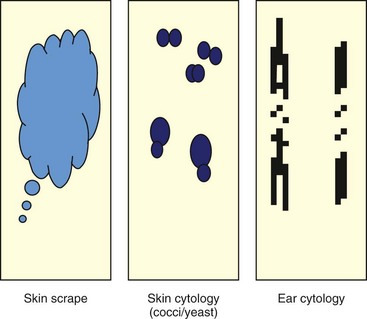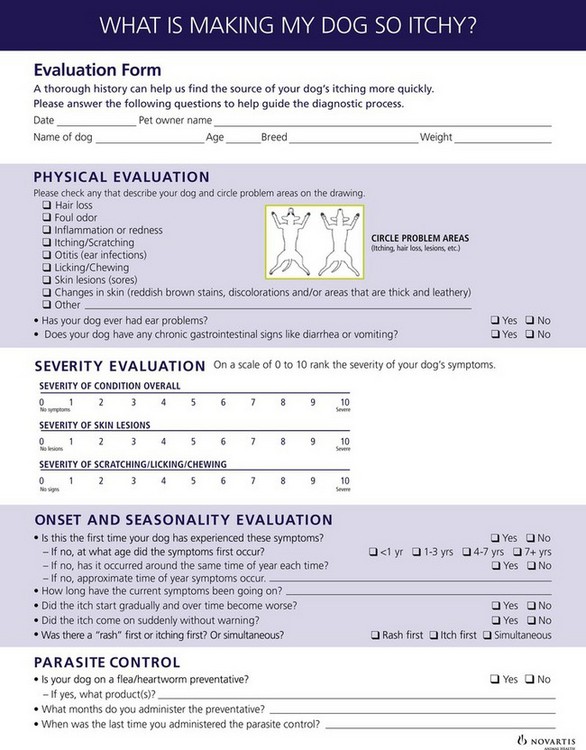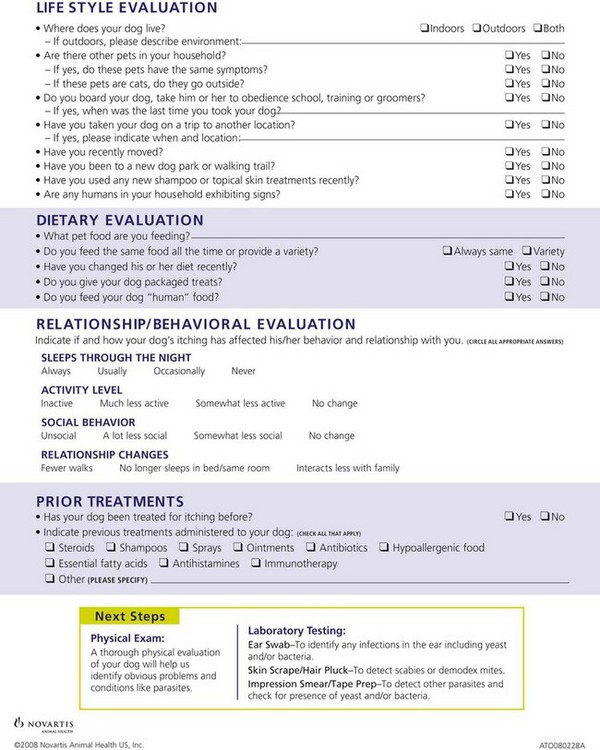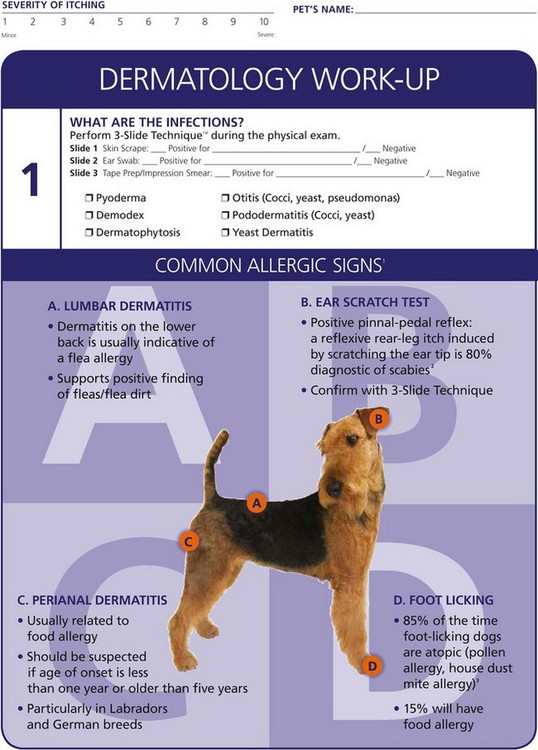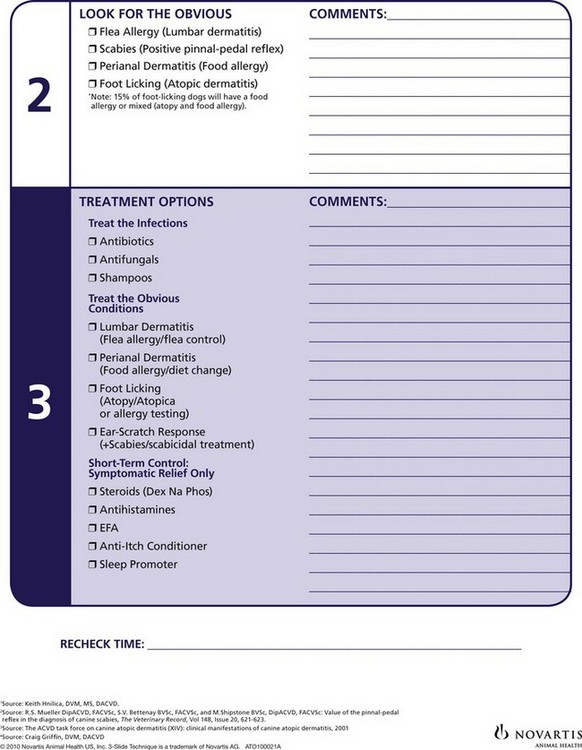CHAPTER | 1 Differential Diagnoses
Essential Questions
Recognition of basic patterns allows a practical approach to most of the common skin diseases.
What Are the Infections?
The practical solution for determining the best method by which to answer the question, “What are the infections?” is to implement a minimum database infection screening procedure to be performed by the technician before the veterinarian examines the patient. Every dermatology patient should undergo otic cytology, skin cytology (an impression smear or a tape prep), and a skin scrape at every examination (initially and at every recheck visit). The 3-slide technique (Figure 1-1) can be performed easily and interpreted by a technician before the doctor completes an evaluation—which is exactly how diarrhea and fecal examinations are handled in most clinics. Moving the cytologic evaluation to the beginning of the dermatology appointment and thereby empowering the technical staff to accomplish the evaluation optimizes the dermatology appointment and provides essential information in the most efficient manner.









































